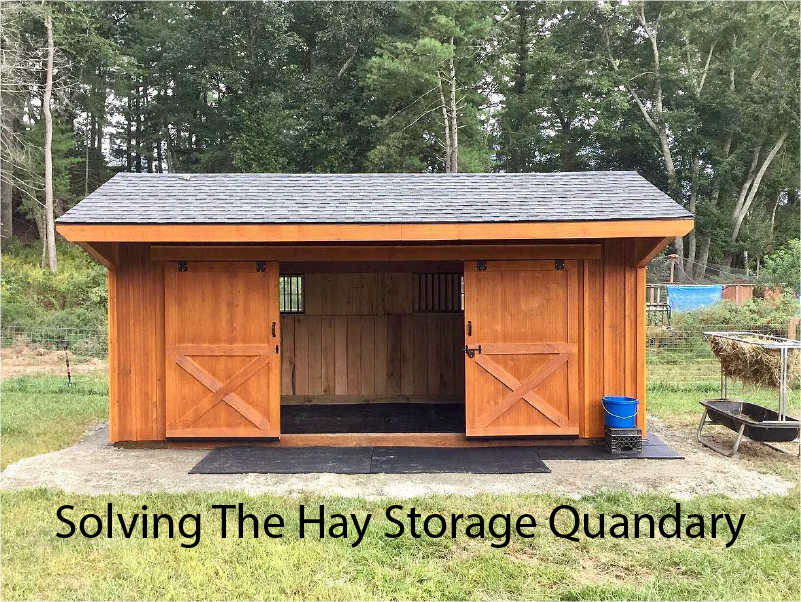Solving The Hay Storage Quandary
by Nikki Alvin-Smith
As good quality horse hay becomes an ever-increasing problem to resource and to afford, equine aficionados are always on the hunt for ways to save money and angst over getting stocked up with the forage supplies needed, especially for winter months.
Many people have the necessary stabling and pasture for their equines, but not much storage availability for large quantities of hay. Let’s face it, adding a whole extra building just to house bales of hay is an expensive enterprise. Or is it? How can you save on your hay budget and ensure a hay supply that is both consistent and of excellent nutritional value.
Having Storage Availability Can Save You Money
To save on the double handling, particularly with small square bales, most farmers will sell hay at a discount price off the wagons when it comes in off the field. Given that the hay has been properly cured, a moisture content around 14% is ideal for most grasses, then stocking up with hay that will sweat up during its first two weeks of curing on the stack is fine as long as where you plan to store it is suitably passively ventilated and the hay is correctly stacked. See our popular article, The Seven Deadly Sins of Haymaking, for more detail on that.
You can even buy hay standing in a field if you get really organized, but that is risky. You don’t know how it will come in or when.
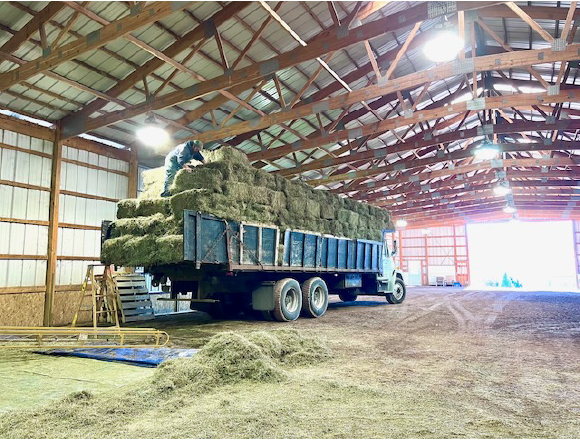
The advantage of being able to buy hay when it is readily available doesn’t end with cost savings. It also allows you more choice for the hay provider you work with and provides a consistent and known provenance of the hay because you are working directly with the producer.
So, while constructing a special storage building just to house your hay supplies may sound a big capital outlay, over the course of time the savings you can make on buying hay at a discount when prices are lowest as availability on the market is highest, makes sense. Realizing of course that the same structure could easily house other items that would benefit from being sheltered from the weather such as bedding supplies. And other more transportable and expensive items like ATVs/UTVs can be kept secure protecting it from being stolen and keeping it out of the hands of inquisitive exploration by young children.
If you operate a horse business, borrowing money and financing the purchase of a new building can likely be amortized/depreciated and any interest on loan deducted from expenses to minimize the tax burden. Worth asking your accountant about if you believe you qualify.
Storage Options
The storage structure or space you need to stock up on hay will depend on how many equines you own and how much hay you go through in a year. It also depends on what type of hay you buy, large rounds or square bales, or small squares.
For optimal space utilization, square shapes are always better than rounds.
To figure out your space needs, some 101 mathematics are in order. Here’s a basic formula for square bales:
1. Identify how many bales of which size you feed each day on average throughout the year (remember in warmer months you likely feed hay to stabled horses). Multiply that number by 365.
2. Take a measurement of length x width x height of a bale currently in your barn if you are not sure on sizing. Because every farmer has different equipment unless you ask them their standard bale size you’ll need to have a number to work from. To give you an idea a standard size small square bale can range in size but a good number to work from is 16” x 18” x 40” (farmers can adjust their balers to reduce or increase bale length so expect measurements to be approximate and take an average for best accuracy). This will give you the size of the bale in cubic inches.
3. Multiply your number in Item 1 x your number in Item 2. This will give you total cubic inches of storage space you’ll need.
4. Divide the number from Item 3 by 1728 to convert your cubic inches total to cubic feet.
To give you an idea of space, try measuring a stall. For example: A standard stall is 10’ wide x 12’ length x 10’ high. So that’s 1200 cubic feet of storage space. Based on the small square bale size mentioned above, this stall would theoretically fit approximately 180 bales of hay IF there was no wasted space and bales were packed as tightly as possible.
But of course, there will be wastage because bales are not always uniform in size and may not fit neatly along one line without gaps at the end. For this reason, it’s best to allow a 10-15% margin of error. For example: 180 bales x 15% is 27. If you went with a conservative number you’d fit 180 bales less 27 wastage is 153 bales.
Packing hay tightly together is not a good idea (see article above on best stacking practices) as it restricts air movement within and around the stacked hay too much. Also remember you may wish to add some protection from ground moisture at the base of the stack, so take off 4 inches from your height measurement to allow for pallets if you are going to use them.
Where To Put Your Storage Structure
Wherever you store your hay remember it needs to be easily accessible whatever the weather. Stacking hay in a far-off corner of the farm will necessitate plowing a track to the building if you live in a region that enjoys winter snow. This will make the task of fetching hay an unnecessarily difficult and labor centric endeavor.
If you are building a storage structure close to your home or existing barn, how it looks will be important to you. While a plastic dome might suffice to keep the hay dry and protected from weather, it may look unsightly placed in full view. It can also lessen property value as it has a negative curb appeal if you come to sell the property later.
Also remember the structure must be accessible for both ingress and egress. If a tractor is to be used to stack a pyramid of large round bales for example, the height of the structure must allow for the use of the type of equipment you plan to use to both stow and extricate the bales safely. This means that the height of the building may be higher than surrounding structures, making it more highly visible. Careful site placement for optimal use and aesthetic is a good plan.
What Structure To Build
Plastic or poly tunnel designs, traditional wood barns or metal buildings all offer pluses and minuses. The poly tunnel may be the cheapest option though this is not always the case. Many folks assume it is a less expensive option, but a durable poly tunnel that is well-made and will last more than just a few winter seasons is not cheap.
A metal clad building can also be a budget friendly choice. A metal structure built to minimal standards that will still carry a snow load and wind load that meets local building codes can save money on more expensive brand siding products.
Though even if you live in an agricultural area where no planning permit is required for the building it’s still a good idea to follow the building code for safe use and longevity of the structure. Review the market for information on the ‘skin’ of the building and also the steel to be used for wall and roof support structural components and check ‘apples to apples’ when pricing. What looks cheap on paper often is once it is assembled on site.
In regard to the actual siding product used review its thickness, the method that paint is applied to the metal and the type of paint used because this is critical to the integrity of the paint protection over time. You do not want the metal to rust or chalk as the structure ages, becoming both unsightly and more importantly, requiring labor to repair.
Be aware that metal sided and roofed buildings will suffer from condensation during periods of temperature changes. Without an underlay of insulation, the roof may drip water onto the hay stored inside during such periods. Metal conducts heat, so during hot weather this structure will emanate heat to its interior space. This can make it uncomfortable for working in during summer months, just when you are loading in hay.
Traditional Wood Barn
Wood offers natural insulating properties as well as a traditional aesthetic appeal from both inside and out. Board and batten siding that is painted or stained with a modern day long-lasting 15-year warrantied stain product is a popular choice for barns.
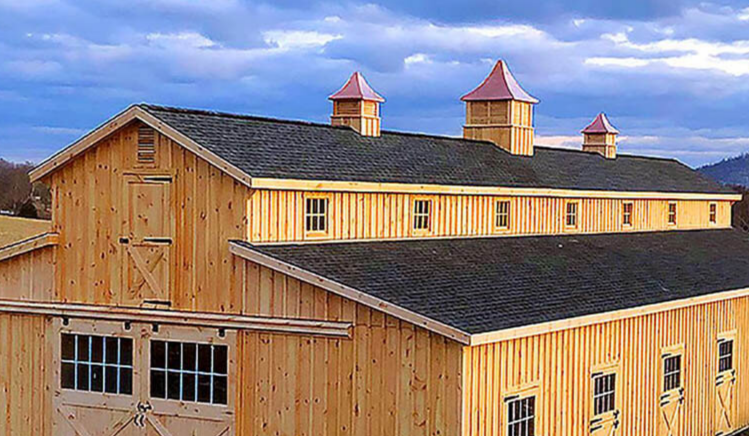
On the downside, as wood does not have the same structural strength as steel members, the span of the building without pillar support beneath is generally more limited. This means the open space is more confined within its interior, especially to operate large equipment like a tractor. A nimble skidsteer can offer a solution for large bales.
The purchase of a run-in shed can also provide a good amount of hay storage space. Easy to have delivered, quick to set up and even moveable from place to place (using integral tow hooks located on their corners in better models), these structures are a boon to the budget minded backyard horse owner seeking to have just a bit more storage room.
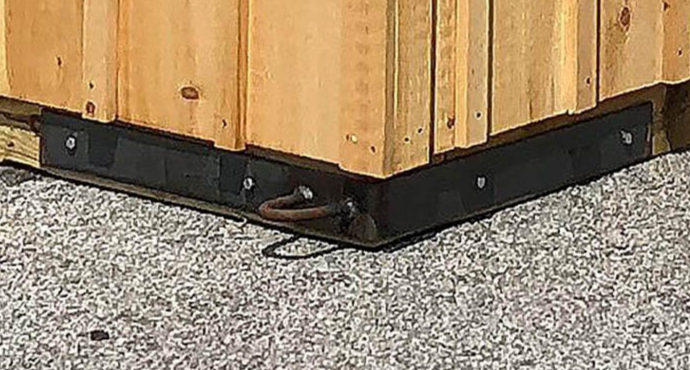
Barn lofts are a traditional and handy place to store hay. Obviously the loft will only accommodate small square bales. If you are contemplating a new barn build, it is a good idea to incorporate a full-size interior staircase for access to the second story, not only will this be easy to use than a loft wall ladder, it will also be safer located inside rather than outside especially during heavy rain and snowfall events.
Be careful if you own an older barn that it is not so beautifully ancient that it was designed to carry a hay load of loose hay only. Modern day baled hay is substantially heavier than loose hay in pounds of weight per square foot.
Downsides of a barn loft are the labor you need to stack the hay, the allergens or dust it can bring into the stable area, and the vermin it can attract. A conveyor is the best way to load the hay into the loft, unless you have a bank barn where access from the ground level on one side facilitates easier use. If you do own a bank barn it was most likely designed for loose hay storage, so be careful the barn is structurally safe to take the weight of the hay provisions.
Second-hand conveyors can be purchased at many farm auctions or online. Simply made with a small electric motor on one end, conveyors can be heavy and hard to maneuver so expect to need two reasonably strong people to get it situated.
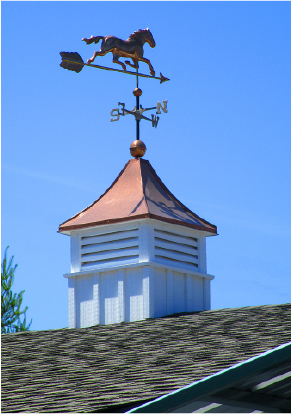 Whatever type of structure you choose to build, remember that passive ventilation is essential to keeping the hay healthy. In some instances, mechanical ventilation may be needed due to climate humidity factors. Operating cupolas, ridge venting, gable, and soffit venting (all wire shielded from birds, squirrels, and bats etc.) are all great ways to encourage good airflow within the structure. Siting the building to take advantage of prevailing summer breezes is also a good plan. Access doors should be placed gable ends facing away from winter prevailing winds in snowy regions.
Whatever type of structure you choose to build, remember that passive ventilation is essential to keeping the hay healthy. In some instances, mechanical ventilation may be needed due to climate humidity factors. Operating cupolas, ridge venting, gable, and soffit venting (all wire shielded from birds, squirrels, and bats etc.) are all great ways to encourage good airflow within the structure. Siting the building to take advantage of prevailing summer breezes is also a good plan. Access doors should be placed gable ends facing away from winter prevailing winds in snowy regions.
Also remember that the access to the hay storage space should accommodate the size and nature of the equipment you plan to use to move hay from A to B. There is no point in having a lofty airy space of great height inside the structure and an entry doorway that is too low or too narrow! It happens.
Feed It Right
Buying poor quality hay is a recipe for disaster on all fronts. Between obvious issues such as hay wastage, possible colic, or respiratory issues, or even worse a barn fire, can result from making a bad choice. Not storing good quality hay properly can easily make a good hay product go bad. Thus, protecting your investment is a smart thing to do.
But a good product is necessarily usually more expensive to buy than one of lesser quality, and for this reason it follows that you want to mitigate the likelihood of hay being used by the equines for bedding, or simply trampling it around under foot when feeding hay in the field.
Saving money on hay can also be easily accomplished with the use of an equine hay feeder. Available for all sizes of hay, these units can cut down on hay wastage by more than 30% according to University studies.
Choosing the right hay feeder – one that is designed with suitability for use with horses is essential.
Take Home Message
There are lots of reports floating about that warn horse owners that horse hay supplies are diminishing each year. In this year alone, horse folks across the country are realizing the importance of getting stocked up with hay earlier and earlier each year. From the revered horse worlds of Kentucky where hay farming has been part of tradition for eons to those mindful of the reduced availability of hay sources previously taken for granted in the fast developing Berkshires of New England people are sounding the alarm about hay resources.
For those who already own loft space and require small square bales with their user-friendly size who wonder Is the small square bale becoming an artisanal product? to large horse farms that buy in by the trailer load each month, safe forage for horses is becoming an increasing nightmare to secure. Development is reducing significant acres of farmland in many areas and then of course Mother Nature has her part in hay production too.
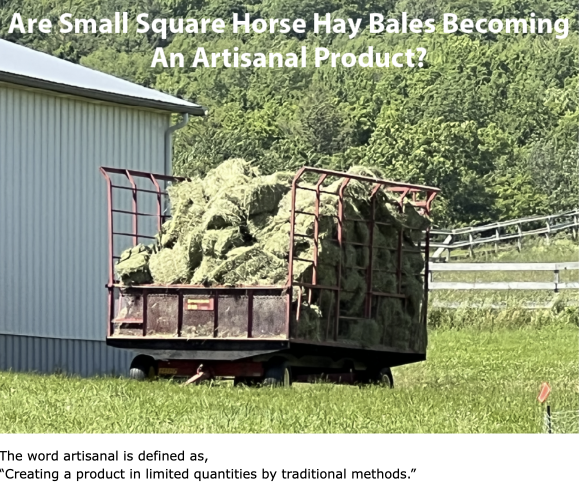
Take steps now and plan ahead. Source a company to collaborate with on your hay structure build that offers financing, a ‘to the penny’ quote and take advantage of modular options and delivery for an almost ‘instant’ solution to your horse hay storage needs.



